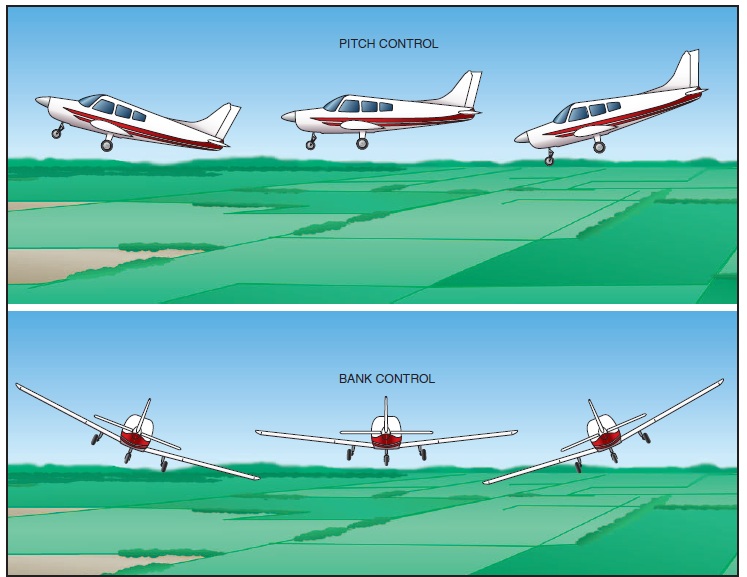
Chapter 3—Basic Flight Maneuvers
Table of Contents
The Four Fundamentals
Effects and Use of the Controls
Feel of the Airplane
Attitude Flying
Integrated Flight Instruction
Straight-and-Level Flight
Trim Control
Level Turns
Climbs and Climbing Turns
Normal Climb
Best Rate of Climb
Best Angle of Climb
Descents and Descending Turns
Partial Power Descent
Descent at Minimum Safe Airspeed
Glides
Pitch and Power

ATTITUDE FLYING
In contact (VFR) flying, flying by attitude means visually establishing the airplane’s attitude with reference to the natural horizon. [Figure 3-1] Attitude is the angular difference measured between an airplane’s axis and the line of the Earth’s horizon. Pitch attitude is the angle formed by the longitudinal axis, and bank attitude is the angle formed by the lateral axis. Rotation about the airplane’s vertical axis (yaw) is termed an attitude relative to the airplane’s flightpath, but not relative to the natural horizon.
In attitude flying, airplane control is composed of four components: pitch control, bank control, power control, and trim.

Figure 3-1. Airplane attitude is based on relative positions of the nose and wings on the natural horizon.
- Pitch control is the control of the airplane about the lateral axis by using the elevator to raise and lower the nose in relation to the natural horizon.
- Bank control is control of the airplane about the longitudinal axis by use of the ailerons to attain a desired bank angle in relation to the natural horizon.
- Power control is used when the flight situation indicates a need for a change in thrust.
- Trim is used to relieve all possible control pressures held after a desired attitude has been attained.
The primary rule of attitude flying is: ATTITUDE + POWER = PERFORMANCE
PED Publication